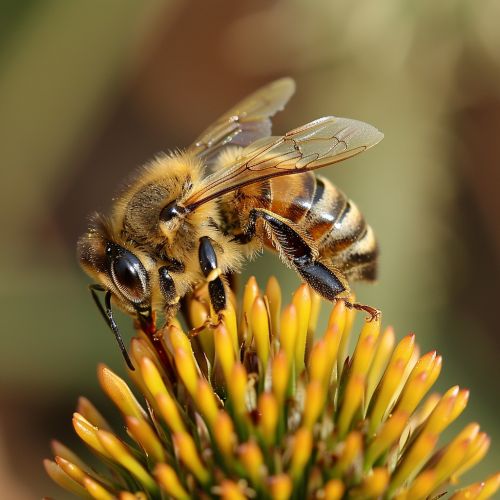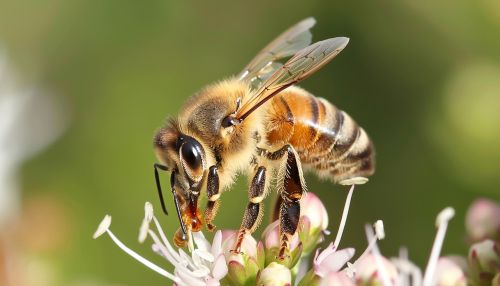Colony Collapse Disorder
Introduction
Colony Collapse Disorder (CCD) is a phenomenon that has been observed in honey bee colonies, primarily affecting European honey bees. It is characterized by the sudden and unexplained disappearance of the majority of worker bees in a colony, leaving behind a queen, immature bees, and ample food supplies. This disorder has significant implications for agriculture and ecosystems due to the critical role that honey bees play in pollination.
Historical Context
The first significant reports of CCD emerged in the United States in the mid-2000s, although similar phenomena have been documented as far back as the 19th century. Historical records indicate that beekeepers have occasionally faced unexplained losses of bee colonies, but the scale and frequency of CCD in recent years have prompted extensive scientific investigation.
Symptoms and Diagnosis
CCD is diagnosed based on a set of specific symptoms:
- Sudden loss of the adult bee population with few or no dead bees found near the hive.
- Presence of a live queen and usually a small number of immature bees.
- Presence of food stores, both honey and bee bread, that are not immediately robbed by other bees or pests.
- Delayed invasion by pests such as wax moths and small hive beetles.
Potential Causes
Numerous factors have been proposed as potential causes of CCD, often involving a combination of stressors. These include:
Pathogens
Several pathogens have been implicated in CCD, including Nosema ceranae, a microsporidian parasite, and various viruses such as the Israeli acute paralysis virus (IAPV) and the Deformed wing virus (DWV). These pathogens can weaken the immune system of bees, making them more susceptible to other stressors.
Pesticides
Neonicotinoid pesticides have been a major focus of research due to their neurotoxic effects on bees. These systemic pesticides can be present in pollen and nectar, leading to chronic exposure for foraging bees. Studies have shown that sub-lethal doses of neonicotinoids can impair bee navigation, foraging behavior, and immune function.
Environmental Stressors
Environmental factors such as habitat loss, climate change, and poor nutrition also contribute to the stress experienced by bee colonies. The reduction of biodiversity in agricultural landscapes limits the availability of diverse and nutritious forage for bees.
Beekeeping Practices
Certain beekeeping practices, such as the use of chemical treatments for pest control and the transportation of colonies over long distances for commercial pollination, can exacerbate stress on bee populations. The practice of migratory beekeeping is particularly associated with increased exposure to pathogens and pesticides.
Impact on Agriculture and Ecosystems
Honey bees are vital pollinators for many crops, including fruits, vegetables, and nuts. The decline in bee populations due to CCD poses a significant threat to agricultural productivity and biodiversity. Pollination services provided by bees are estimated to contribute billions of dollars annually to the global economy.


Current Research and Mitigation Strategies
Research efforts are ongoing to better understand the multifactorial nature of CCD and to develop effective mitigation strategies. These include:
Breeding and Genetic Research
Selective breeding programs aim to develop bee strains that are more resistant to pathogens and environmental stressors. Genetic research is also focused on identifying genes associated with disease resistance and stress tolerance.
Pesticide Regulation
Regulatory agencies in various countries have implemented restrictions on the use of certain neonicotinoid pesticides. Ongoing research is evaluating the effectiveness of these regulations and exploring alternative pest management strategies.
Habitat Restoration
Efforts to restore and preserve natural habitats are crucial for providing bees with diverse and nutritious forage. Initiatives such as planting wildflower strips and creating pollinator-friendly landscapes are being promoted to support bee health.
Beekeeping Best Practices
Beekeepers are encouraged to adopt best practices that minimize stress on bee colonies. This includes regular monitoring for pests and diseases, providing supplemental nutrition during periods of scarcity, and reducing the use of chemical treatments.
Future Directions
The complexity of CCD necessitates a multidisciplinary approach to research and mitigation. Future studies will likely focus on the interactions between various stressors and their cumulative effects on bee health. Advances in technology, such as the use of remote sensing and big data analytics, hold promise for improving our understanding of CCD and developing more effective solutions.
